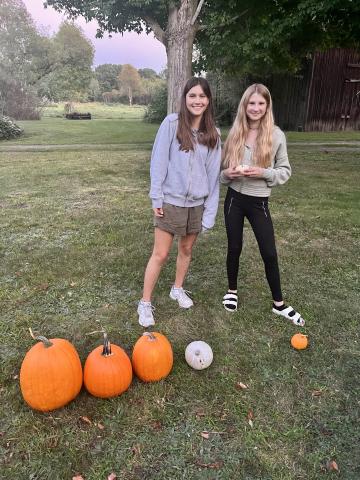
What your clock is to a day, the seasons are to a farm. And the way to tell it's autumn is when it's time to pluck the plucky pumpkins. They're plucky because this year, the seeds were planted late. They grew even during a hot, dry summer. And they survived pests that we didn't even know existed, let alone how to deter. This year we had Field and Howden Pumpkins (the big ones you use for carving), Caspers (white like a ghost), Small Sugar Pumpkins (more on that in a minute), Mixed Mini Pumpkins, and Acorn Squash.
Pumpkins (which are actually a kind of squash in the family of "winter squash") should regularly make the list of "super foods," though they rarely do. According to the New York Times, of your daily recommended diet, one cup of pumpkin puree (think bread, pie, and other recipes) has:
- Vitamin A - 200%
- Vitamin E - 22%
- Vitamin K - 36%
- It also contains vitamin B6, vitamin C, magnesium, riboflavin, iron, and potassium. Potassium reduces blood pressure and reduces the risk of strokes. Pumpkin also has beta-carotine, and vitamins C and E as antioxidants, which protect skin from UV rays . With about 25% of daily recommended fiber, it's also good for digestion, and regulates blood sugar and cholesterol. Canned pumpkin is about as good for you, but don't confuse that with pumpkin pie filling, which has added sugar and sodium.
We started the pumpkin patch this year for the fun of it. Now knowing the health of it, we're going really big after this fall. Wish us luck. And the pumpkins pluck.
Follow us on
